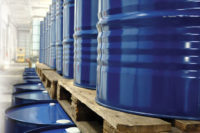
A major change that will dramatically affect the MSDS and product labeling landscape is the promulgation of the Globally Harmonized System (GHS) by the United Nations. The unavoidable challenges related to this and the recommended worldwide implementation has created significant interest, as well as apprehension, in the world of environmental health and safety.
Change often brings anxiety, but with thoughtful preparation, the proposed benefits can make a significant difference in the effectiveness of MSDSs as well as product labeling both domestically and internationally. These benefits include greater consistency with a clear message across sectors through harmonization of signal words, pictograms and hazard warnings; better workplace protection; and the reduction of costs associated with preparation of labels and (material) safety data sheets by classifying chemicals once, for all agencies. Internationally, GHS will enhance protection of people and the environment, facilitate international trade in chemicals, reduce the need for duplicate testing and evaluation, and assist countries and international organizations in the sound management of chemicals.
Change is coming
Although it appears not all countries agree completely on how GHS should be applied, most have come to agree on a few specific areas related to MSDSs and labels. First, you can anticipate that the MSDS will experience extensive change after adoption of the GHS, as all products will need to be classified for health and physical hazards based on GHS criteria. The title of the document will also likely be changed to Safety Data Sheet (SDS).
Additionally, the flexibility of format will be removed. Specifically, the 16-section document (as adopted by ANSI Z400.1-2004) will be required. The order of the 16 sections will be specified; with Section Two prescribed for hazard identification and Section Three defined for components. The consistent format will greatly assist employees in quickly and easily finding pertinent information on the MSDS.
Labeling will also change quite significantly. The GHS will require standardization of labels, which will result in a reprocessing of every label during transition. Standardized pictograms, signal words, hazard statements and precautionary statements are specifically designed to enhance communication for all those handling chemicals. It appears that each region and/or country may adopt different variations of the GHS as it applies to hazard classification categories, precautionary measures and hazard statements.
GHS and my workspace
How will this affect you? Some questions to consider are:
- Should I classify my product MSDSs across all GHS hazard classification categories and adopt multiple outputs to fit the requirements of each region or country where my company currently distributes its products?
- Alternatively, should I prepare a globally compliant document in order to increase my ROI and minimize the expense of managing multiple MSDS and label formats?
- When (and how) will I transition completely to the GHS format?
- How can I cost effectively rewrite, reclassify and redistribute all of my MSDSs?
Due to this reality, it is important that your MSDS service providers have a system capable of meeting these GHS requirements. Ensure that your service providers have a system in place to be able to update your MSDSs to include the new format, hazard classifications with their corresponding hazard statements, precautionary statements and pictograms. Beyond that, confirm that your providers are able to update your workplace labels to be GHS compliant when the time comes.
Finally, don’t forget your employees. Training must be conducted to educate them about the new GHS information. This is especially important if your organization receives products from those countries that have implemented the GHS prior to U.S. implementation.
Creating a GHS transition plan
How you address and prioritize your transition path will have major implications to your business. Create a GHS Transition Plan that considers these guidelines for a smooth successful program:
- Embrace early adoption in order to establish market differentiation and effectively serve your customers.
- Identify service partners who have a deep understanding of the EHS industry and issues and provide a holistic service solution, not just a technology solution.
- Conduct an ROI analysis to compare the costs and benefits of an in-house vs. outsourced GHS transition approach.
